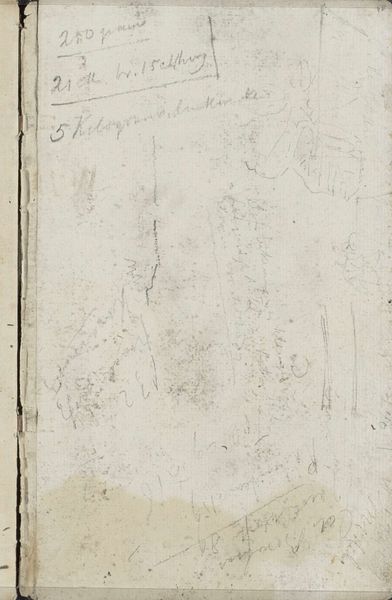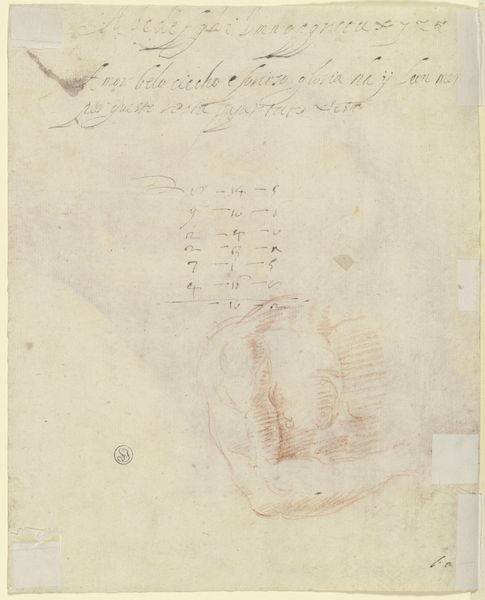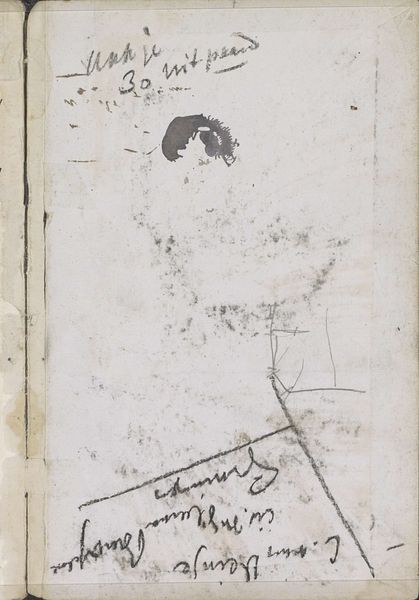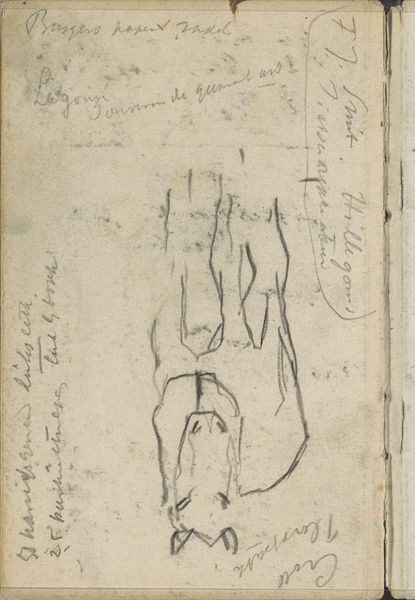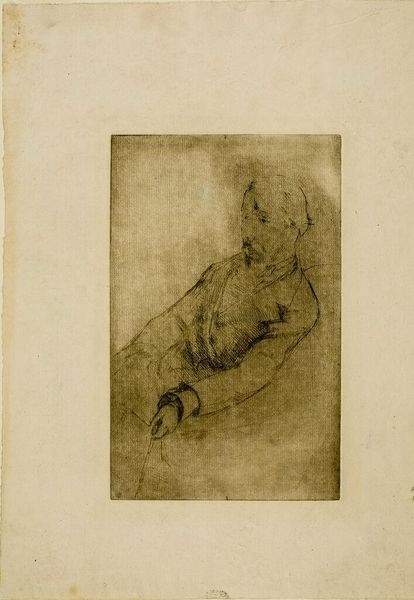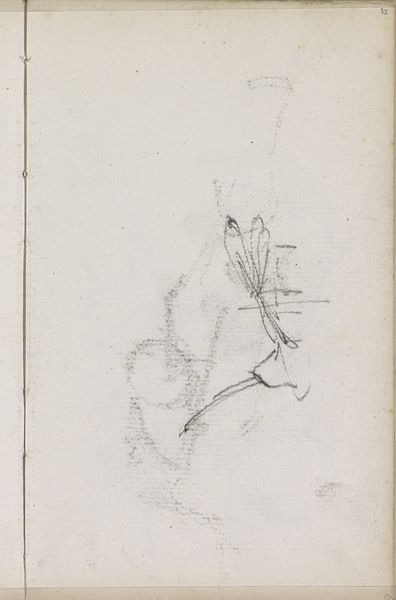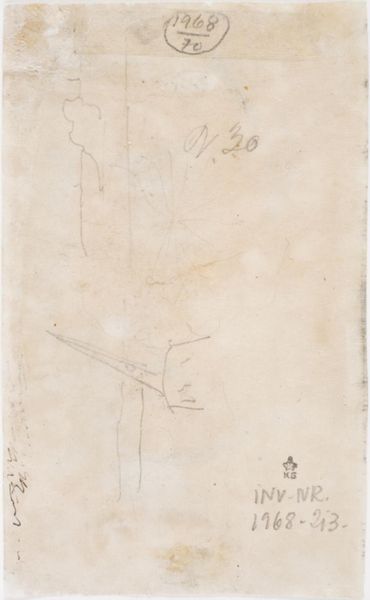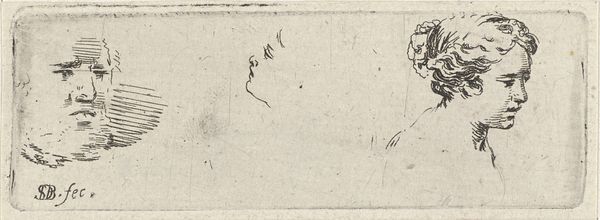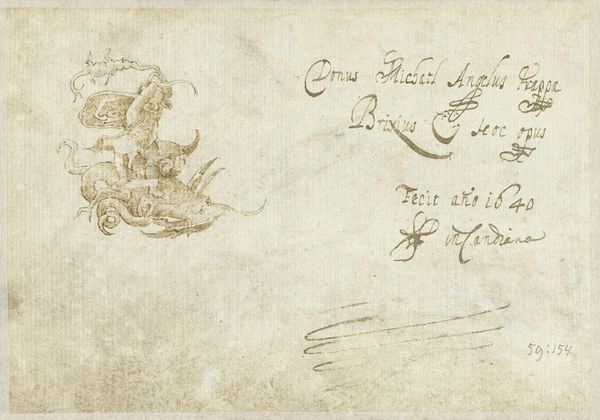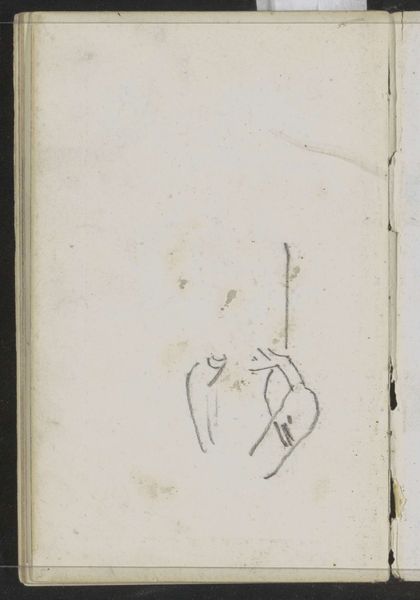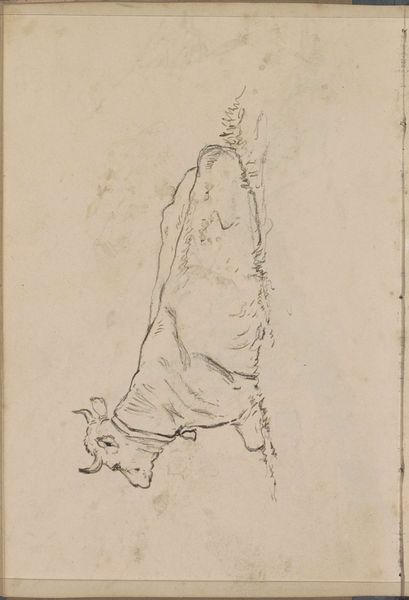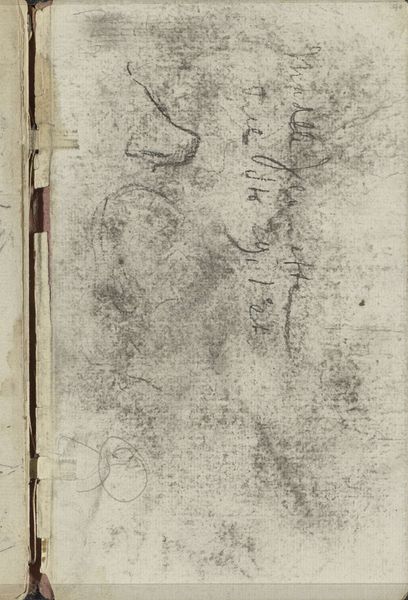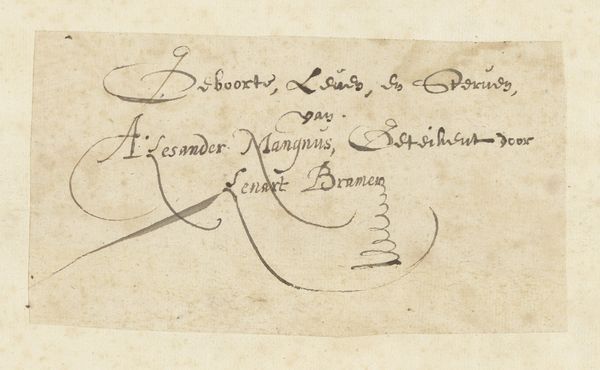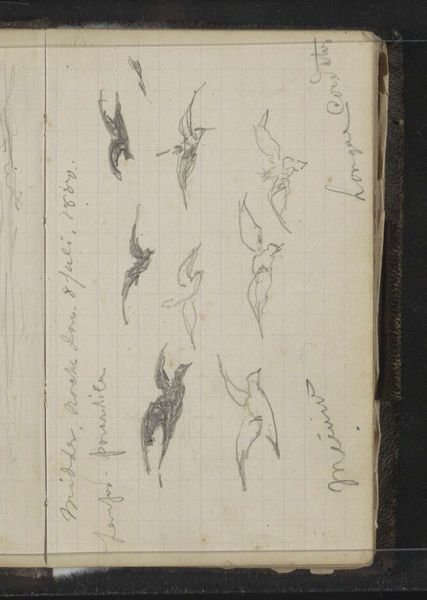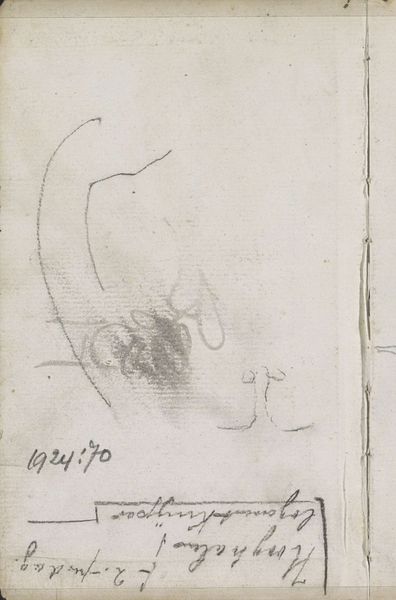
drawing, charcoal
portrait
drawing
figuration
11_renaissance
charcoal
charcoal
Dimensions: 130 mm (height) x 93 mm (width) (bladmaal)
Curator: This compelling charcoal drawing, simply titled "Lower part of a right arm," comes to us from the late 16th or early 17th century and is attributed to Santi di Tito. Editor: My first thought is just, wow, that hand looks tired. There's a real sense of weight in that arm, you can almost feel the weariness settling into those lines. Curator: Indeed. As a figural study, it likely served a larger purpose. Santi di Tito was known for his portraiture, so perhaps this was a preliminary sketch for a more extensive painting. It's remarkable how much he conveys with so little. We're really looking at pure Renaissance training here. Editor: That context is everything, isn't it? Suddenly, I see past the potential exhaustion and notice a strength in the way the fingers are articulated. You realize, too, the sitter in a full portrait is performing for an audience. There’s performative gesture imbued within a physical constraint here, if that makes sense. Curator: It absolutely does. You've pointed to a fascinating duality—a strain coexisting with performativity. What resonates most for me is the intimacy the artist allows us to perceive. The softness of the charcoal creates a gentle shadow, capturing the subtlest nuances of the arm's form. This work is also on paper, which is such a delicate material to begin with. It has so much cultural memory imbued within it that the work invites reflection across spans of history. Editor: Right, so that fragility clashes powerfully with the monumentality usually reserved for male portraits of this period, or indeed the type of person deemed worthy of a portrait during the Renaissance! It's almost an act of defiance or commentary. What about the cultural associations of hands? Manual labor versus the symbolic "laying on of hands," like an act of giving power. Curator: The implications are rife. I imagine the piece sparks a myriad of associations depending on the viewer, and where the person stands historically to make meaning of those relations. Ultimately, it remains a poignant and captivating study of the human form that leaves us to explore what a gesture or even body part signifies across cultural spaces. Editor: I agree. It makes me wonder whose hand it was and how it may have played its own part in history too. The piece really exemplifies that less is sometimes more.
Comments
No comments
Be the first to comment and join the conversation on the ultimate creative platform.
